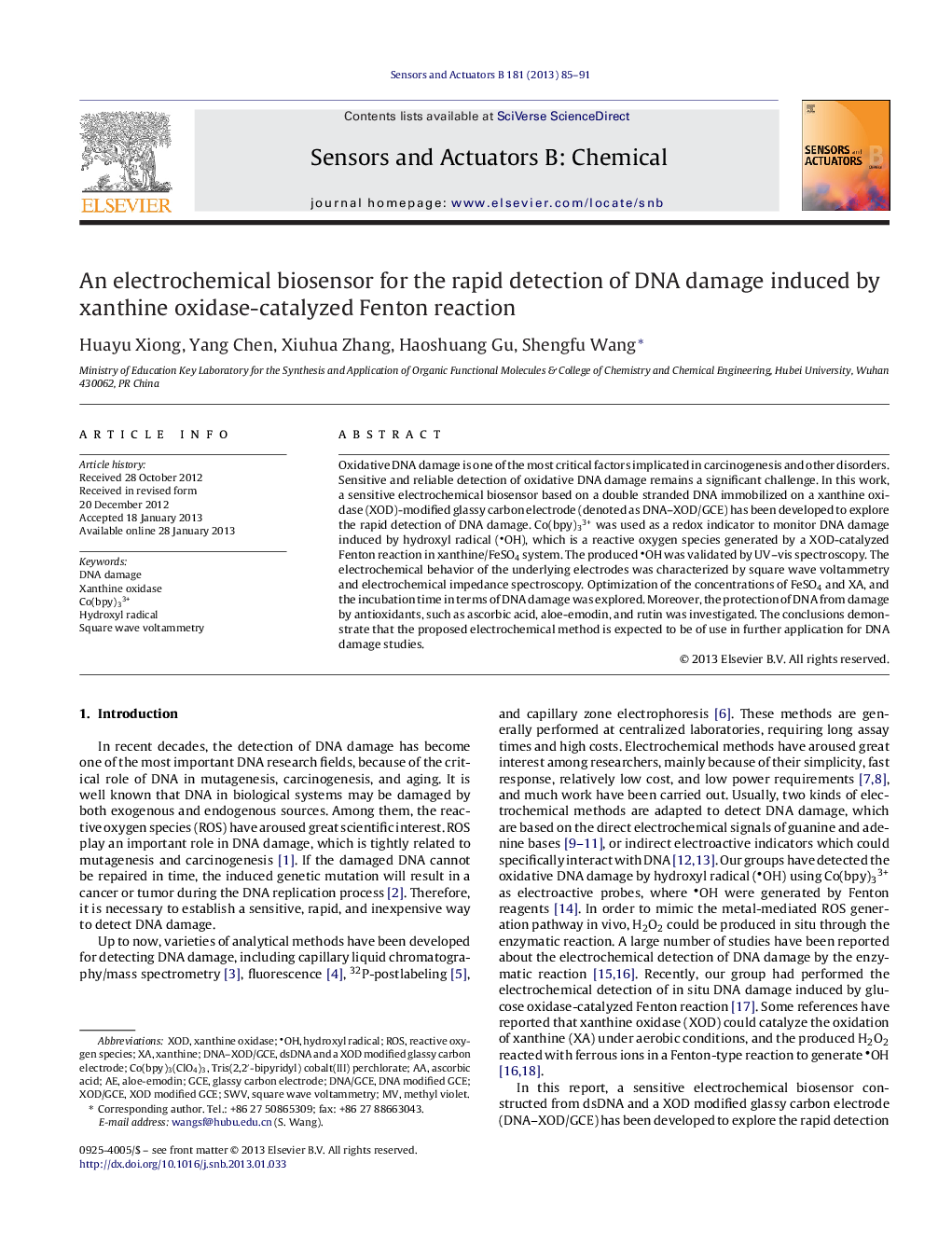| Article ID | Journal | Published Year | Pages | File Type |
|---|---|---|---|---|
| 742114 | Sensors and Actuators B: Chemical | 2013 | 7 Pages |
Oxidative DNA damage is one of the most critical factors implicated in carcinogenesis and other disorders. Sensitive and reliable detection of oxidative DNA damage remains a significant challenge. In this work, a sensitive electrochemical biosensor based on a double stranded DNA immobilized on a xanthine oxidase (XOD)-modified glassy carbon electrode (denoted as DNA–XOD/GCE) has been developed to explore the rapid detection of DNA damage. Co(bpy)33+ was used as a redox indicator to monitor DNA damage induced by hydroxyl radical (OH), which is a reactive oxygen species generated by a XOD-catalyzed Fenton reaction in xanthine/FeSO4 system. The produced OH was validated by UV–vis spectroscopy. The electrochemical behavior of the underlying electrodes was characterized by square wave voltammetry and electrochemical impedance spectroscopy. Optimization of the concentrations of FeSO4 and XA, and the incubation time in terms of DNA damage was explored. Moreover, the protection of DNA from damage by antioxidants, such as ascorbic acid, aloe-emodin, and rutin was investigated. The conclusions demonstrate that the proposed electrochemical method is expected to be of use in further application for DNA damage studies.
